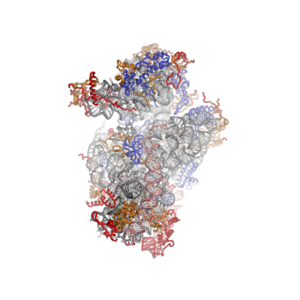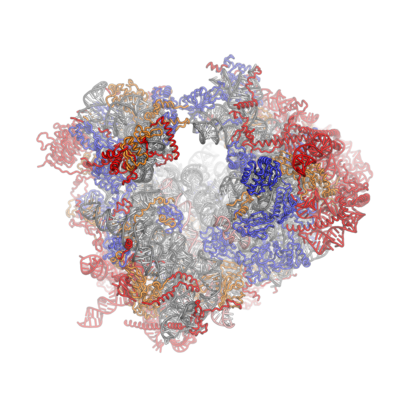
Overview
The Ribosome is a large and complex molecular machine that catalyzes the synthesis of proteins, referred to as translation. Herein, the ribosome selects aminoacylated transfer RNAs (tRNAs) based on the sequence of a protein encoding messenger RNA (mRNA) and covalently links the amino acids into a polypeptide chain.Ribosomes from all organisms share a highly conserved catalytic center. However, the ribosomes of eukaryotes (animals, plants, fungi and many unicellular organisms with a nucleus) are much larger than prokaryotic (bacterial and archaeal) ribosomes and subject to more complex regulation and biogenesis pathways.These Eukaryotic ribosomes are also known as 80S ribosomes, referring to their sedimentation coefficients in Svedberg units, because they sediment faster than the prokaryotic (70S) ribosomes. Eukaryotic ribosomes have two unequal subunits, designated small subunit (40S) and large subunit (60S) according to their sedimentation coefficients. Both subunits contain dozens of ribosomal proteins arranged on a scaffold composed of ribosomal RNA (rRNA). The small subunit monitors the complementarity between tRNA anticodon and mRNA, while the large subunit catalyzes peptide bond formation.
Composition
Compared to their prokaryotic homologs, many of the eukaryotic ribosomal proteins are enlarged by insertions or extensions to the converved core. Furthermore, several additional proteins are found in the small and large subunits of eukaryotic ribosomes, which do not have prokaryotic homologs.The 40S subunit contains a 18S ribosomal RNA (abbreviated 18S rRNA), which is homologous to the prokaryotic 16S rRNA. The 60S subunit contains a 26S rRNA that is homologous to the prokaryotic 23S ribosomal RNA. In addition, it contains a 5.8S rRNA that corresponds to the 5'end of the 23S rRNA, and a short 5S rRNA.Both 18S and 26S have multiple insertions to the core rRNA fold of their prokaryotic counterparts, which are called expansion segments. For a detailed list of proteins, including archaeal and bacterial homologs please refer to the separate articles on the 40S and 60S subunits.
| Eukaryotic[1] | Bacterial[1] | ||
|---|---|---|---|
| Ribosome | Sedimentation coefficient | 80 S | 70 S |
| Molecular mass | ~3.2*106 Da | ~2.0*106 Da | |
| Diameter | ~250-300 Å | ~200 Å | |
| Large subunit | Sedimentation coefficient | 60 S | 50 S |
| Molecular mass | ~2.0*106 Da | ~1.3*106 Da | |
| Proteins | 47 | 33 | |
| rRNAs |
|
| |
| Small subunit | Sedimentation coefficient | 40 S | 30 S |
| Molecular mass | ~1.2*106 Da | ~0.7*106 Da | |
| Proteins | 32 | 20 | |
| rRNAs |
|
|
Structure Determination
After the determination of the first bacterial [2][3][4] and archaeal [5] ribosome structures in the 1990s it took another decade until atomic structures of the eukaryotic ribosome were obtained by X-Ray crystallography, mainly because of the difficulties in obtaining crystals of sufficient quality.[6][7][8] In 2010, the atomic structure of the 40S subunit from Tetrahymena thermophila, a ciliate, was reported.[6] The structure was determined in complex with initiation factor 1 (eIF1) and therefore not only revealed the fold of the entire 18S ribosomal RNA and of all ribosomal proteins of the 40S subunit, but also defined the interactions with eIF1. In 2011, the structure of the 60S subunit from the same organism was solved in complex with initiation factor 6 (eIF6),[7] and was followed immediately by the structure of the entire 80S ribosome [8] from the yeast Saccharomyces cerevisiae.Atomic coordinates (PDB files) and structure factors of the eukaryotic ribosome have been deposited in the Protein Data Bank (PDB) under the following accession codes:
| Complex | Source Organism | Resolution | PDB Identifier[9] |
|---|---|---|---|
| 40S:eIF1 | T. thermophila | 3.9 Å | |
| 60S:eIF6 | T. thermophila | 3.5 Å | |
| 80S:Stm1 | S. cerevisiae | 3.0 Å |
Architecture of the Eukaryotic Ribosome
General Architectural Features
Some general architectural features of the ribosome are conserved across kingdoms:[10] The shape of the small subunit can be subdivided into two large segments, the head and the body. Characteristic features of the body include the left and right feet, the shoulder and the platform. The head features a pointed protrusion reminiscent of a bird's beak. In the characteristic "crown view" of the large subunit, structural landmarks include the central protuberance, the L1-stalk and the P-stalk.[11][12]The majority of the eukaryote-specific RNA and protein elements are found on the solvent-exposed sides of the 40S [6] and 60S[7] subunits. The subunit interface, as well as important functional regions such as the peptidyl transferase center and the decoding site are mostly conserved, with some differences observed in the surrounding regions. In stark contrast to prokaryotic ribosomal proteins, which interact primarily with RNA, the eukaryote-specific protein segments engage in a multitude of protein-protein interactions. Long-distance interactions are mediated by eukaryote-specific helical extensions of ribosomal proteins, and several eukaryotic ribosomal proteins jointly to form inter-protein beta-sheets.
The ribosomal RNA core is represented as a grey tube, expansion segments are shown in red. Universally conserved proteins are shown in blue. These proteins have homologs in eukaryotes, archaea and bacteria. Proteins Shared only between eukaryotes and archaea are shown in orange, and proteins specific to eukaryotes are shown in red.
Co-evolution of rRNA and Proteins
The structure of the 40S subunit revealed that the eukaryote-specific proteins (rpS7, rpS10, rpS12 and RACK1), as well as numerous eukaryote-specific extensions of proteins, are located on the solvent-exposed side of the small subunit.[6] Here, they participate in the stabilization of rRNA expansion segments. Moreover, the beak of the 40S subunit is remodeled, as rRNA has been replaced by proteins rpS10 and rpS12.[6]As observed for the 40S subunit, all eukaryote-specific proteins of the 60S subunit (RPL6, RPL22, RPL27, RPL28, RPL29 and RPL36) and many extensions are located at the solvent-exposed side, forming an intricate network of interactions with eukaryotic-specific RNA expansion segments. RPL6, RPL27 and RPL29 mediate contacts between the ES sets ES7–ES39, ES31–ES20–ES26 and ES9–ES12, respectively and RPL28 stabilized expansion segment ES7A.[7]
Ubiquitin Fusion Proteins
In eukaryotes, the small subunit protein rpS27A(S31) and the large subunit protein RPL40 are processed polypeptides, which are translated as fusion proteins carrying N-terminal Ubiquitin domains. Both proteins are located next to important functional centers of the ribosome: The uncleaved ubiquitin domains of rpS27A(S31) and RPL40 would be positioned in the decoding site and near the translation factor binding site, respectively. These positions suggest that proteolytic cleavage is an essential step in the production of functional ribosomes.[6][7] Indeed, mutations of the linker between the core of rpS27A(S31) and the ubiquitin domain are lethal in yeast.[13]
Active Site Region
Comparisons between bacterial, archaeal and eukaryotic ribosome structures reveal a very high degree of conservation in the active site (PTC) region. None of the eukaryote-specific protein elements is close enough to directly participate in catalysis.[7] However, RPL29 projects to within 18Å of the active site in T. thermophila, and eukaryote-specific extensions interlink several proteins in the vicinity of the PTC of the 60S subunit,[7][11] while the corresponding 50S proteins are singular entities.[5]
Intersubunit Bridges
Contacts across the two ribosomal subunits are known as intersubunit bridges. In the eukaryotic ribosome, additional contacts are made by 60S expansion segments and proteins.[8] Specifically, the C-terminal extension of the 60S protein RPL19 interacts with ES6E of the 40S rRNA, and the C-terminal extension of the 60S protein RPL24 interacts with 40S rpS6 and rRNA helix h10. Moreover, the 60S expansion segments ES31 and ES41 interact with rpS3A(S1) and rpS8 of the 40S subunit, respectively, and the basic 25-amino-acid peptide RPL41 is positioned at the subunit interface in the 80S ribosome, interacting with rRNA elements of both subunits.[8][11]
Ribosomal Proteins with Roles in Signaling
Two 40S ribosomal proteins (RACK1 and rpS6) have been implicated in signaling: RACK1, the Receptor of Activated Protein Kinase C (PKC), is an integral component of the eukaryotic ribosome and is located at the back of the head, in proximity of rpS17.[6] It links signal-transduction pathways directly to the ribosome (reviewed in [14]). Ribosomal protein rpS6 is located at the right foot of the 40S subunit [6] and is phosphorylated in response to mammalian target of rapamycin (mTOR) signaling.[15]
Functional Aspects
Translation Initiation
Protein synthesis is primarily regulated at the stage of translation initiation. In eukaryotes, the canonical initiation pathway requires at least 12 protein initiation factors, some of which are themselves large complexes.[16] The structures of the 40S:eIF1 [6] and 60S:eIF6 [7] complexes provide first detailed insights into the atomic interactions between the eukaryotic ribosome and regulatory factors. eIF1 is involved in start codon selection, and eIF6 sterically precludes the joining of subunits. However, structural information on the eukaryotic initiaion factors and their interactions with the ribosome is limited, and largely derived from homology models or low-resolution analyses.[17] Elucidation of the interactions between the eukaryotic ribosome and initiation factors at an atomic level is essential for a mechanistic understanding of the regulatory processes, but represents a significant technical challenge, because of the inherent dynamics and flexibility of the initiation complexes.
Regulatory Roles of Ribosomal Proteins
Recent evidence suggests that individual proteins of the eukaryotic ribosome may directly contribute to the regulation of translation.[18] Specifically, mutations in RPL38 lead todevelopmental abnormalities, but not to global translational alterations [19] Moreover, the specific defects [20] and the increased cancer susceptibility [21] that result from mutations in ribosomal proteins may support such a regulatory role.
Protein Translocation and Targeting
To exert their functions in the cell newly synthesized proteins must be targeted to the appropriate location in the cell, which is achieved protein targeting and translocation systems.[22] The growing polypeptide leaves the ribosome through a narrow tunnel in the large subunit. The region around the exit tunnel of the 60S subunit is very similar to the bacterial and archaeal 50S subunits. Additional elements are restricted to the second tier of proteins around the tunnel exit, possibly by conserved interactions with components of the translocation machinery.[7] The targeting and translocation machinery is much more complex in eukaryotes.[23]
Ribosomal Diseases and Cancer
Ribosomopathies are congenital human disorders resulting from defects in ribosomal protein or rRNA genes, or other genes whose products are implicated in ribosome biogenesis.[24] Examples include X-linked Dyskeratosis congenita (X-DC),[21] Diamond–Blackfan anemia,[20] Treacher-Collins-Syndrome (TCS) [25][20] and Shwachman–Bodian–Diamond syndrome (SBDS).[24] SBDS is caused by mutations in the SBDS protein that affects its ability to couple GTP hydrolysis by the GTPase EFL1 to the release of eIF6 from the 60S subunit.[26]
Therapeutic Opportunities
The ribosome is a prominent drug target and many antibacterials interfere with translation at different stages of the elongation cycle [27] Most clinically relevant translation compounds are inhibitors of bacterial translation, but inhibitors of eukaryotic translation may also hold therapeutic potential for application in cancer or antifungal chemotherapy.[28] Elongation inhibitors show antitumor activity 'in vivo' and 'in vitro'.[29][30][31] One inhibitor of eukaryotic translation elongation is the glutarimide antibiotic cycloheximide (CHX), which was co-crystallized with the eukaryotic 60S subunit [7] and binds in the in the ribosomal E-site. The structural characterization of the eukaryotic ribosome [6][8][7] enables the use of structure based methods for the design of novel therapeutics, and allows the structural differences to the bacterial ribosome to be exploited, improving the selectivity and drug and therefore reducing adverse effects.
References
40S
Ribosomal particles are denoted according to their sedimentation coefficients in Svedberg units. The 40S subunit is the small subunit of eukaryotic 80S ribosomes. It is structurally and functionally related to the 30S subunit of 70S prokaryotic ribosomes.[1][2][3][4] However, the 40S subunit is much larger than the prokaryotic 30S subunit and contains many additional protein segments, as well as rRNA expansion segments. More information can be found in the article on the eukaryotic ribosome.
Overall Structure
The shape of the small subunit can be subdivided into two large segments, the head and the body. Characteristic features of the body include the left and right feet, the shoulder and the platform. The head features a pointed protrusion reminiscent of a bird's beak. The mRNA binds in the cleft between the head and the body, and there are three binding sites for tRNA, the A-site, P-site and E-site (see article on protein translation for details).The core of the 40S subunit is formed by the 18S ribosomal RNA (abbreviated 18S rRNA), which is homologous to the prokaryotic 16S rRNA. This rRNA core is decorated with dozens of proteins. In the figure "Crystal Structure of the Eukaryotic 40S Ribosomal Subunit from T. thermophila", the ribosomal RNA core is represented as a grey tube and expansion segments are shown in red. Proteins which have homologs in eukaryotes, archaea and bacteria are shown as blue ribbons. Proteins shared only between eukaryotes and archaea are shown as orange ribbons and proteins specific to eukaryotes are shown as red ribbons.
40S Ribosomal Proteins
The table "40S ribosomal proteins" shows the individual protein folds of the 40S subunit colored by conservation as above. The eukaryote-specific extensions, ranging from a few residues or loops to very long alpha helices and additional domains, are highlighted in red.[1] For a details, refer to the article on the eukaryotic ribosome. Historically, different nomenclatures have been used for ribosomal proteins. For instance, proteins have been numbered according to their migration properties in gel electrophoresis experiments. Therefore, different names may refer to homologous proteins from different organism, while identical names not necessarily denote homologous proteins. The table "40S ribosomal proteins" crossreferences the human ribosomal protein names with yeast, bacterial and archaeal homologs.[5] Further information can be found in the ribosomal protein gene database (RPG).[5]
| Structure (Eukaryotic) [6] | H. sapiens[7][5] | Conservation[8] | S. cerevisiae[9] | Bacterial homolog (E. coli) | Archaeal homolog |
|---|---|---|---|---|---|
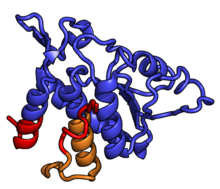 | RPSA | EAB | S0 | S2p | S2 |
 | RPS2 | EAB | S2 | S5p | S5p |
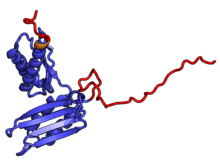 | RPS3 | EAB | S3 | S3p | S3p |
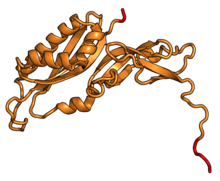 | RPS3A | EA | S1 | n/a | S3Ae |
 | RPS4 | EA | S4 | n/a | S4e |
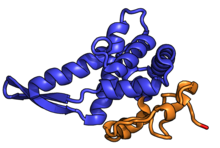 | RPS5 | EAB | S5 | S7p | S5p |
 | RPS6 | EA | S6 | n/a | S6e |
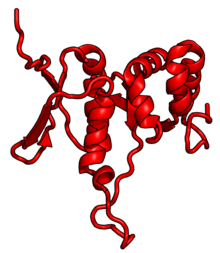 | RPS7 | E | S7 | n/a | n/a |
 | RPS8 | EA | S8 | n/a | S8e |
 | RPS9 | EAB | S9 | S4p | S4p |
 | RPS10 | E | S10 | n/a | n/a |
 | RPS11 | EAB | S11 | S17p | S17p |
 | RPS12 | E | S12 | n/a | n/a |
 | RPS13 | EAB | S13 | S15p | S15p |
 | RPS14 | EAB | S14 | S11p | S11p |
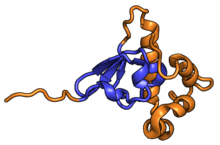 | RPS15 | EAB | S15 | S19p | S19p |
 | RPS15A | EAB | S22 | S8p | S8p |
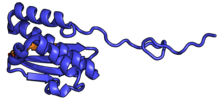 | RPS16 | EAB | S16 | S9p | S9p |
 | RPS17 | EA | S17 | n/a | S17e |
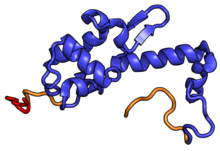 | RPS18 | EAB | S18 | S13p | S13p |
 | RPS19 | EA | S19 | n/a | S19e |
 | RPS20 | EAB | S20 | S10p | S10p |
 | RPS21 | E | S21 | n/a | n/a |
 | RPS23 | EAB | S23 | S12p | S12p |
 | RPS24 | EA | S24 | n/a | S24e |
 | RPS25 | EA | S25 | n/a | S25e |
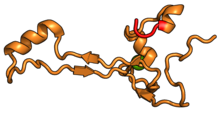 | RPS26 | EA | S26 | n/a | S26e |
 | RPS27 | EA | S27 | n/a | S27e |
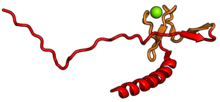 | RPS27A | EA | S31 | n/a | S27ae |
 | RPS28 | EA | S28 | n/a | S28e |
 | RPS29 | EAB | S29 | S14p | S14p |
 | RPS30 | EA | S30 | n/a | S30e |
 | RACK1 | E | Asc1 | n/a | n/a |
External links
References
60S
Ribosomal particles are denoted according to their sedimentation coefficients in Svedberg units. The 60S subunit is the large subunit of eukaryotic 80S ribosomes. It is structurally and functionally related to the 50S subunit of 70S prokaryotic ribosomes.[1][2][3][4][5] However, the 60S subunit is much larger than the prokaryotic 50S subunit and contains many additional protein segments, as well as rRNA expansion segments. More information on the structure can be found in the article on the eukaryotic ribosome.
Overall Structure
Characteristic features of the large subunit, shown in the "Crown View" (as seen below) include the central protuberance (CP) and the two stalks, which are named according to their bacterial protein components (L1 stalk on the left as seen from the subunit interface and L7/L12 on the right). There are three binding sites for tRNA, the A-site, P-site and E-site (see article on protein translation for details.The core of the 60S subunit is formed by the 26S ribosomal RNA (abbreviated 26S rRNA), which is homologous to the prokaryotic 16S rRNA, which also contributes the active site (peptidyl transferase center, PTC) of the ribosome.[1][3] The rRNA core is decorated with dozens of proteins. In the figure "Crystal Structure of the Eukaryotic 60S Ribosomal Subunit from T. thermophila", the ribosomal RNA core is represented as a grey tube and expansion segments are shown in red. Proteins which have homologs in eukaryotes, archaea and bacteria are shown as blue ribbons. Proteins shared only between eukaryotes and archaea are shown as orange ribbons and proteins specific to eukaryotes are shown as red ribbons.
60S Ribosomal Proteins
The table "60S ribosomal proteins" shows the individual protein folds of the 60S subunit colored by conservation as above. The eukaryote-specific extensions, ranging from a few residues or loops to very long alpha helices and additional domains, are highlighted in red.[1] For a details, refer to the article on the eukaryotic ribosome. Historically, different nomenclatures have been used for ribosomal proteins. For instance, proteins have been numbered according to their migration properties in gel electrophoresis experiments. Therefore, different names may refer to homologous proteins from different organism, while identical names not necessarily denote homologous proteins. The table "60S ribosomal proteins" crossreferences the human ribosomal protein names with yeast, bacterial and archaeal homologs.[6] Further information can be found in the ribosomal protein gene database (RPG).[6]
| Structure (Eukaryotic) [7] | H. sapiens[8][6] | Conservation[9] | S. cerevisiae[10] | Bacterial homolog (E. coli) | Archaeal homolog |
|---|---|---|---|---|---|
 | RPLP0 | EAB | P0 | L10 | L10 |
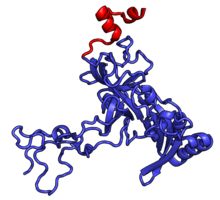 | RPL3 | EAB | L3 | L3 | L3 |
 | RPL4 | EAB | L4 | L4 | L4 |
 | RPL5 | EAB | L5 | L18 | L18p |
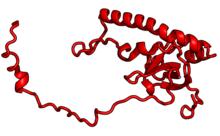 | RPL6 | E | L6 | n/a | n/a |
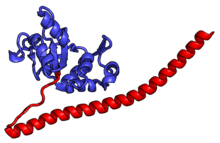 | RPL7 | EAB | L7 | L30 | L30 |
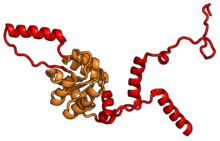 | RPL7A | EA | L8 | n/a | L7Ae |
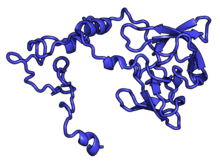 | RPL8 | EAB | L2 | L2 | L2 |
 | RPL9 | EAB | L9 | L6 | L6 |
 | RPL10 | EAB | L10 | L16 | L10e |
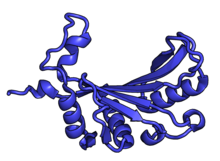 | RPL11 | EAB | L11 | L5 | L5 |
 | RPL13 | EA | L13 | n/a | L13e |
 | RPL13A | EAB | L16 | L13 | L13 |
 | RPL14 | EA | L14 | n/a | L14e |
 | RPL15 | EA | L15 | n/a | L15e |
 | RPL17 | EAB | L17 | L22 | L22 |
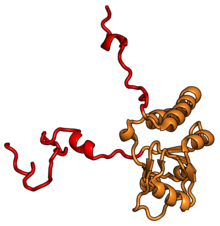 | RPL18 | EA | L18 | n/a | L18e |
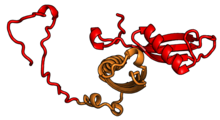 | RPL18A | EA | L20 | n/a | Lx |
 | RPL19 | EA | L19 | n/a | L19 |
 | RPL21 | EA | L21 | n/a | L21e |
 | RPL22 | E | L22 | n/a | n/a |
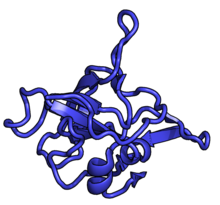 | RPL23 | EAB | L23 | L14 | L14p |
 | RPL23A | EAB | L25 | L23 | L23 |
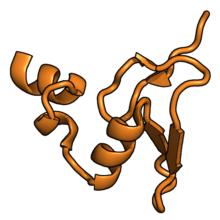 | RPL24 | EA | L24 | n/a | L24e |
 | RPL26 | EAB | L26 | L24 | L24 |
 | RPL27 | E | L27 | n/a | n/a |
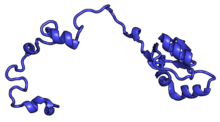 | RPL27A | EAB | L28 | L15 | L15 |
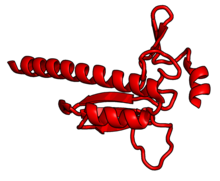 | RPL28 | E | n/a [11][1][2] | n/a | n/a |
 | RPL29 | E | L29 | n/a | n/a |
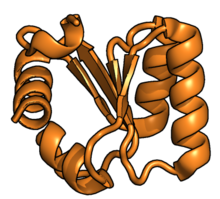 | RPL30 | EA | L30 | n/a | L30e |
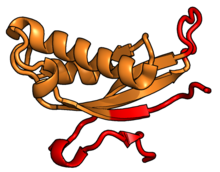 | RPL31 | EA | L31 | n/a | L31e |
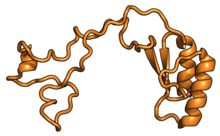 | RPL32 | EA | L32 | n/a | L32e |
 | RPL34 | EA | L34 | n/a | L34e |
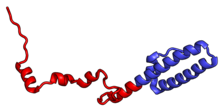 | RPL35 | EAB | L35 | L29 | L29 |
 | RPL35A | EA | L33 | n/a | L35Ae |
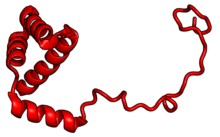 | RPL36 | E | L36 | n/a | n/a |
 | RPL36A | EA | L42 | n/a | L44e |
 | RPL37 | EA | L37 | n/a | L37e |
 | RPL37A | EA | L43 | n/a | L37Ae |
 | RPL38 | EA | L38 | n/a | L38e |
 | RPL39 | EA | L39 | n/a | L37Ae |
 | RPL40 | EA | L40 | n/a | L40e |
